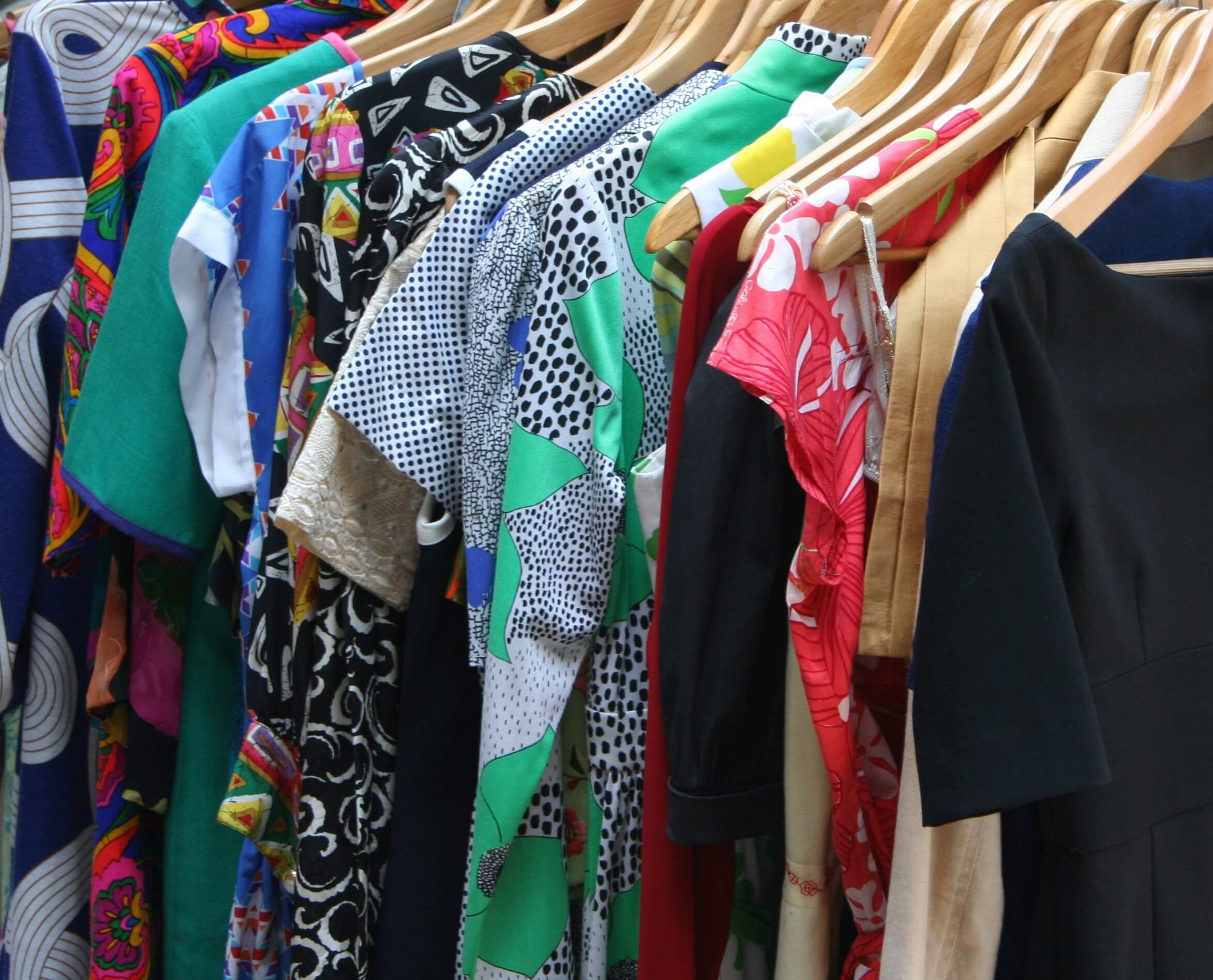 By Melissa Goodwin.
By Melissa Goodwin.
Daily Routine
Wake. Drink coffee and eat breakfast. Shower, get dressed and head out the door. Everyone has a morning ritual, and although yours may be different than mine, unless you live in a nudist colony, your ritual probably involves getting cleaned up and getting dressed. Most of us don’t give any thought to these rituals, but a little knowledge might change that.
For most of our day, our bodies are ensconced in clothing. We’re out of our PJs in the morning, into workout gear, followed by work clothes, and finally into comfy clothes for the rest of the evening. Typically the only thought we give to the clothes we choose is how stylish and comfortable they are, and how much they cost. Little thought goes into how the fabric is made, where the clothes are manufactured, and the impact those things have on our environment, our economy, and the lives of people all over the world.
Since you’re reading Green Living Magazine, chances are you’re eco-conscious. You might think that by buying clothing made of natural fabrics like cotton or bamboo, you’re doing the eco-friendly thing. Unfortunately, you’d be wrong. It’s much trickier than that.
Natural doesn’t mean nature-friendly
While cotton and bamboo are natural fabrics, they are poor choices in regards to their environmental impact. Conventional cotton has earned the reputation for being one of the dirtiest crops on the planet. More pesticides are used on this crop than any other in the world – a full 25 percent of all pesticides used are applied to cotton crops, according to the Organic Consumers website. These chemicals contaminate the soil and pollute the water and the air. The global consumption of conventional cotton produces 1.8 tons of greenhouse gas emissions a year, says Swedish Linens. Cotton is a thirsty crop – it takes 713 gallons of water to produce enough cotton for a single T-shirt!
Bamboo isn’t much better. At first glance it looks great: it’s a sustainable crop, requires no fertilizer, and self-generates from its own roots, so it doesn’t need to be replanted. Dig a little deeper though and you’ll find the dirt. It is a sustainable crop, but that doesn’t mean it’s being grown sustainably. Most bamboo is grown in China, where there are few regulations. Where bamboo gets really dirty is in its production.
The process of getting those hard green sticks into soft, luxurious fabric is a highly intensive chemical process – the bamboo is dissolved in a chemical solution to create a pulpy, viscous substance that can then be spun into fibers and made into thread. These chemicals are highly toxic and a risk to human health. What’s more, according to the Natural Resources Defense Council, half of the hazardous waste produced in the process cannot be captured for reuse and goes directly into the environment.
More dirty little secrets
The production of these fabrics has an ugly environmental impact, and so do the finishes applied to them. The dyes and processes to make fabric wrinkle-, shrinkage-, water-, flame-, and stain-resistant all have toxic chemicals behind them. Toxic surfactants called NPEs (nonylphenol ethoxylates) are commonly used as detergents in textile processing. These NPEs are released when you wash your clothes, eventually ending up in our water supplies and our oceans.
According to Marci Zaroff, an expert in sustainable and eco-friendly fashion and textiles, “The magnitude and multitude of toxic chemicals in the fashion and textile industries is out of control. Even though some carcinogens are regulated [for example, formaldehyde, linked to cancer, is regulated in the U.S.], most brands are still manufactured overseas, where regulation is far behind.”
Location, location, location
In addition to the environmental impact of clothing, fabric and textile production, there’s the social and economic impact to consider, too. It’s an increasingly competitive industry, and textile products from some countries are produced in unethical conditions. Workers’ rights and fair trade practices are an important consideration when choosing clothing. Sometimes, though, you can’t just rely on the “made in” label. There’s a slippery but completely legal practice whereby designers can claim their clothing is made in a certain country as long as at least 51 percent of the product is actually made there.
Don’t throw in the towel!
While these practices are disheartening, we as consumers do have some control. Here are some tips to keep in mind when shopping, so you can feel good about your clothing choices.
- Avoid clothing made from nylon, polyester, rayon, and conventional cotton.
- Choose clothing made from Tencel, Modal, Cupro, and organic cotton. Learn more about eco-friendly fabrics here: www.mindbodygreen.com/0-25104/the-4-most-toxic-fabrics-their-ecofriendly-upgrades
- Look for GOTS, OEKO-TEX and Cradle to Cradle Certified products. These products are verified to adhere to ethical and sustainable practices. www.c2ccertified.org
- Wash your new clothes before you wear them! This will help remove skin-irritating chemicals, as well as other disturbing organisms.
- Shop vintage or secondhand, the most sustainable shopping method.
- When shopping for new clothes, choose ethical clothing brands. Buy quality pieces that you love, so they’ll last and you’ll be willing to wear them for the long haul.
Melissa Goodwin is the owner of Wave Health and Pain Therapy, where she offers low-frequency acoustic wave pressure therapy, a drug-free, non-invasive approach to total body health and pain relief. Learn more at www.wavehealthaz.com.
Photo credit: James DeMers






Yes! Hemp is another excellent fabric choice when selecting a sustainable wardrobe (or a Hemp/Tencel blend). It’s bleached using hydrogen peroxide (non-chlorine), it’s extremely durable, and it helps condition soil during growth, instead of stripping it. Win-win-win!
We agree! Thank you so much for taking the time to read this article.